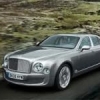What Can A Rb25 Handle?
Announcements
-
Similar Content
-
Latest Posts
-
Don't bother. Easier to get seats/rails that fit ie. aftermarket or R32/3 Gtst/gtr seats.
-
There's no twin scroll on the OEM turbos. On the manifold, kinda, yes. Not on the turbos.
-
By joshuaho96 · Posted
Yeah, but twin scroll is the OEM thing and I love pain. -
By Watermouse · Posted
Outsider is where I got my dbw system and throttle body/accelerator harness’ from. Premo quality and customer service -
Yeah - the Hitachi core is huge (long) and the core Tao uses is quite short, so the compressor housing moves backwards. But I wouldn't let that stop me. In fact, I didn't. But I imagine that the correct thing to do is to go for the latest G series on an Artec manifold. In V band. And f**k the twin scroll, because short short Artec manifold runners + easy install/removal/adjustment outweigh the small loss in spool.
-





Recommended Posts
Create an account or sign in to comment
You need to be a member in order to leave a comment
Create an account
Sign up for a new account in our community. It's easy!
Register a new accountSign in
Already have an account? Sign in here.
Sign In Now